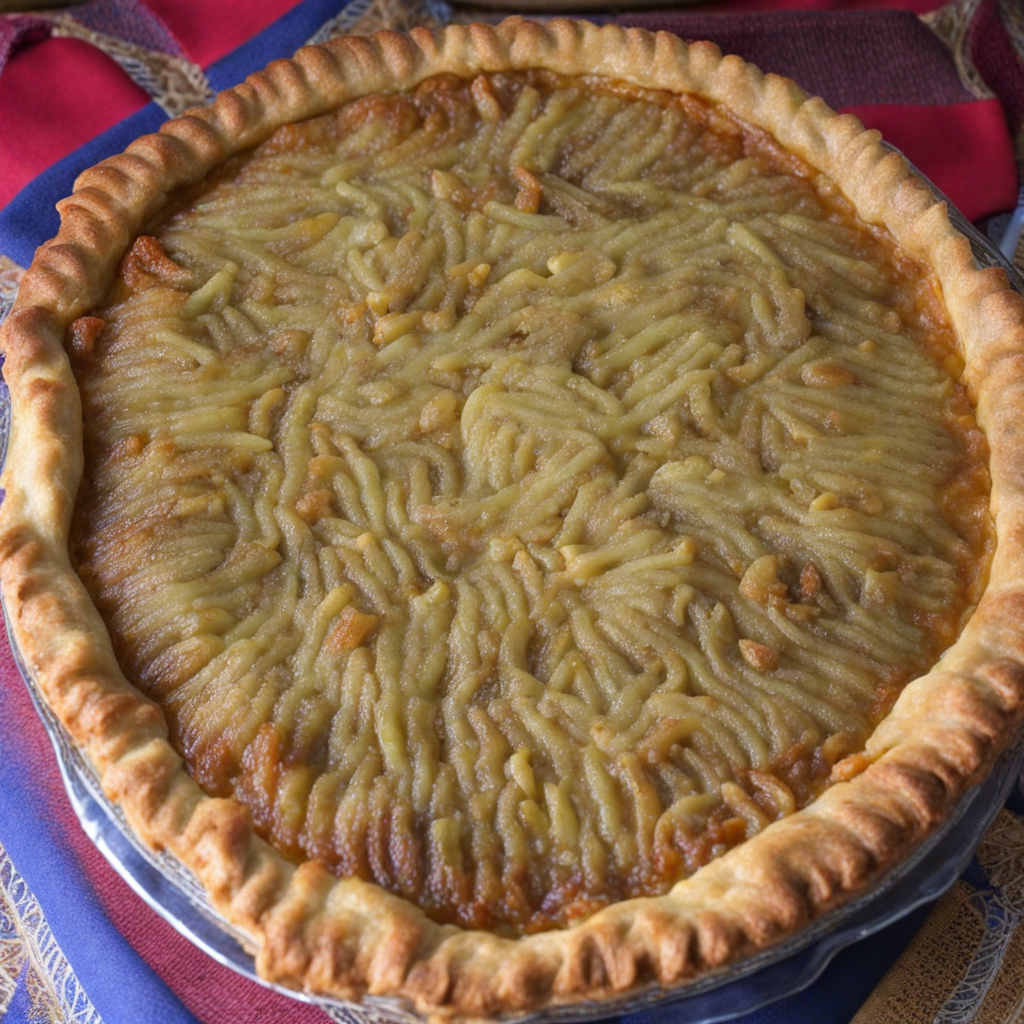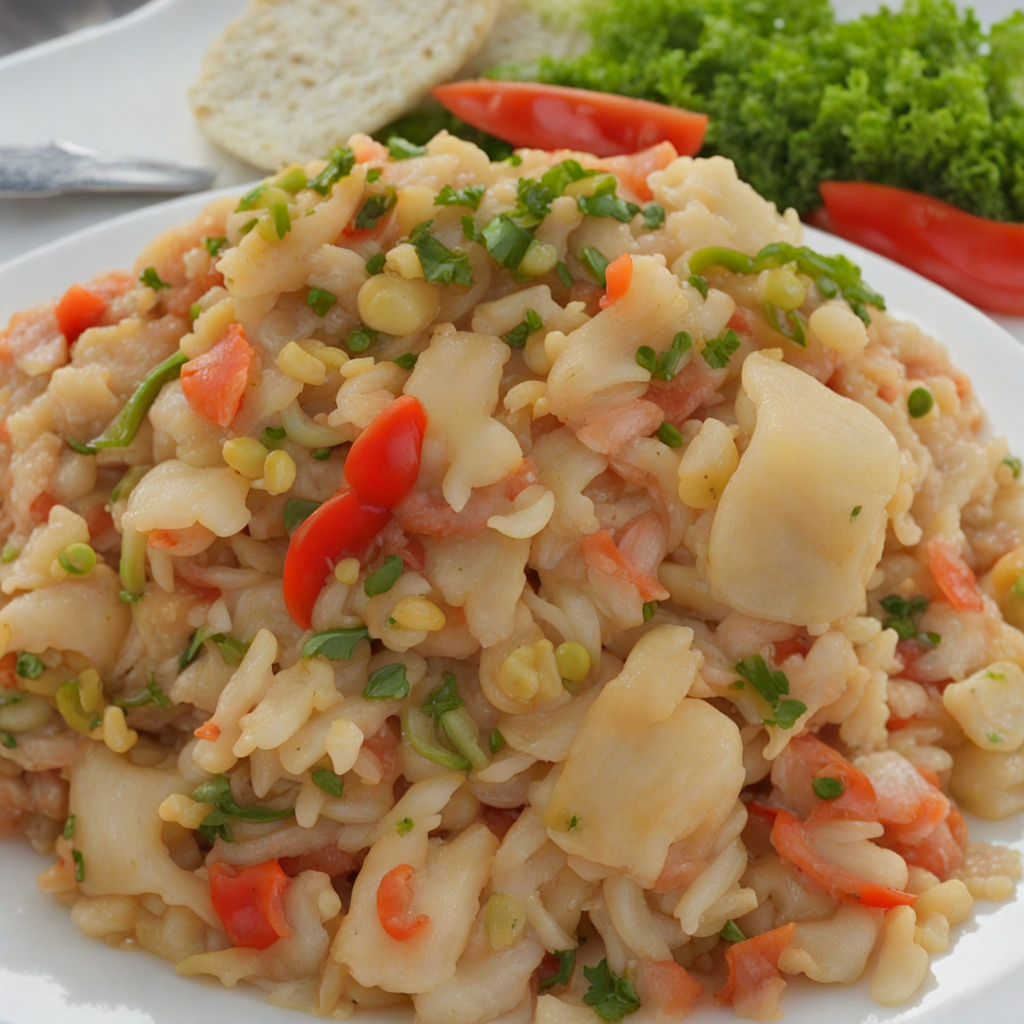Fig Pie
Fig Pie, a delightful treat from Dominica, is a unique dessert that captures the essence of the island's rich agricultural heritage. This pie is made primarily from ripe figs, which are a staple fruit in the Caribbean, celebrated for their sweet and slightly tangy flavor. The figs are often harvested at their peak ripeness, ensuring that the pie boasts a natural sweetness that perfectly complements its flaky crust. The combination of fresh figs with local spices creates a complex flavor profile that is both comforting and exotic, making it a must-try for anyone looking to explore Caribbean cuisine. What sets Fig Pie apart is its preparation method, which often involves a blend of traditional and modern baking techniques. The crust is typically made from a buttery pastry that is delicately rolled out and baked to golden perfection, providing a satisfying crunch that contrasts beautifully with the soft, juicy filling. The figs are usually mixed with ingredients like cinnamon, nutmeg, and a hint of vanilla, enhancing their natural flavors and adding warmth to each bite. This pie is not just a dessert; it’s a celebration of the local ingredients that Dominica has to offer. When served, Fig Pie is often accompanied by a scoop of vanilla ice cream or a dollop of whipped cream, elevating the experience even further. The combination of the warm pie with the cold creamy topping creates a delightful temperature contrast that tantalizes the taste buds. Each slice reveals a stunning visual of rich fig filling peeking through the golden crust, inviting you to savor the taste of Dominica in every bite. Whether enjoyed at a family gathering or as a sweet ending to a meal, Fig Pie is sure to leave a lasting impression on anyone who dares to indulge in its deliciousness.
How It Became This Dish
Fig Pie: A Culinary Treasure of Dominica #### Origins Fig Pie, a delightful culinary creation from the Caribbean island of Dominica, has roots that intertwine with the island's rich cultural tapestry. The term "fig" in the local context refers not to the sweet fruit commonly known in other parts of the world, but rather to the green bananas that are a staple in Caribbean cuisine. This distinction is crucial, as it reflects the island’s unique agricultural practices and the influence of its colonial past. The origins of Fig Pie can be traced back to the indigenous peoples of the Caribbean, who cultivated bananas long before European colonizers arrived. These early inhabitants recognized the versatility of the fruit, utilizing it in various forms, from boiled to roasted. The arrival of the French and later the British in the 17th and 18th centuries introduced new culinary techniques and ingredients, leading to a fusion of flavors and cooking styles that would shape modern Dominican cuisine. The traditional Fig Pie embodies the island's agricultural bounty and the adaptability of its people. By the 19th century, as the plantation economy flourished, bananas became an essential export, and the local population began to innovate ways to incorporate this staple into their diets. The Fig Pie emerged as a beloved dish, showcasing not only the banana but also the cultural exchanges that characterized Dominica’s history. #### Cultural Significance The cultural significance of Fig Pie extends beyond its ingredients; it is a symbol of community and tradition. In Dominica, food is more than sustenance; it is a way of connecting with one’s heritage and fostering community ties. Fig Pie is often prepared for special occasions, family gatherings, and celebrations, serving as a reminder of the island's agricultural legacy and culinary ingenuity. The dish is typically made using a combination of ripe green bananas, which are boiled and mashed, and then mixed with ingredients such as coconut, nutmeg, and vanilla. The mixture is then encased in a pastry shell, creating a sweet and savory pie that reflects the island’s diverse flavors. The preparation of Fig Pie often involves the entire family, from peeling the bananas to rolling out the dough, making it a communal activity that strengthens familial bonds. In addition to its role in family gatherings, Fig Pie is also a part of the island's festivals and cultural celebrations. Events like the World Creole Music Festival and Carnival often feature local cuisine, with Fig Pie taking center stage as a symbol of Dominican pride. The dish not only showcases the culinary skills of the islanders but also serves as a platform to celebrate their cultural identity and heritage. #### Development Over Time As time progressed, Fig Pie began to evolve, adapting to the changing tastes and influences brought by globalization. The late 20th century saw an influx of tourism in Dominica, which brought with it a new appreciation for local cuisine. Visitors were intrigued by the island’s unique flavors and culinary traditions, prompting local chefs and home cooks to experiment with recipes and presentation. Modern interpretations of Fig Pie often incorporate international ingredients and techniques, leading to variations that cater to diverse palates while still honoring traditional methods. For example, some recipes now include spices such as cinnamon and ginger, adding depth and warmth to the dish. Others may suggest alternative crusts, integrating elements from other cultures, such as a flaky pastry or even a crumbly topping. The rise of social media and food blogs has also played a significant role in the resurgence of Fig Pie's popularity. Enthusiastic foodies and travelers have taken to platforms like Instagram and TikTok to showcase their culinary adventures, featuring the vibrant colors and unique textures of Fig Pie. This visibility has sparked a renewed interest in traditional Dominican foods, encouraging younger generations to embrace their culinary heritage while also allowing for creative experimentation. #### Fig Pie in Contemporary Dominica Today, Fig Pie continues to be a beloved dish in Dominica, reflecting the island's ability to adapt and thrive in a changing world. It is commonly served at local eateries, food festivals, and family gatherings, often accompanied by other traditional dishes such as callaloo soup and fried plantains. The pie remains a staple of Dominican cuisine, and its popularity has only grown as the island garners attention for its natural beauty and rich cultural offerings. In recent years, efforts to promote sustainable agriculture and local food systems have further influenced the production and consumption of Fig Pie. Many local farmers are returning to traditional practices, emphasizing organic cultivation and seasonal ingredients. This shift not only promotes environmental sustainability but also connects consumers with the land and the farmers who grow their food. As a result, Fig Pie is increasingly seen as a dish that embodies the island's commitment to preserving its culinary heritage while embracing modern values of sustainability and community. #### Conclusion In summary, Fig Pie is more than just a delicious dessert; it is a culinary artifact that encapsulates the history, culture, and identity of Dominica. From its indigenous roots to its evolution in contemporary cuisine, Fig Pie represents the resilience and creativity of the Dominican people. As the island continues to navigate the complexities of modernity, this beloved dish remains a testament to the enduring power of food as a means of cultural expression and community connection. As Dominica moves forward, Fig Pie will undoubtedly continue to evolve, reflecting both the island's rich past and its vibrant future. Whether enjoyed at a family gathering, a local festival, or a beachfront café, Fig Pie will always hold a special place in the hearts and palates of those who call this beautiful island home.
You may like
Discover local flavors from Dominica







